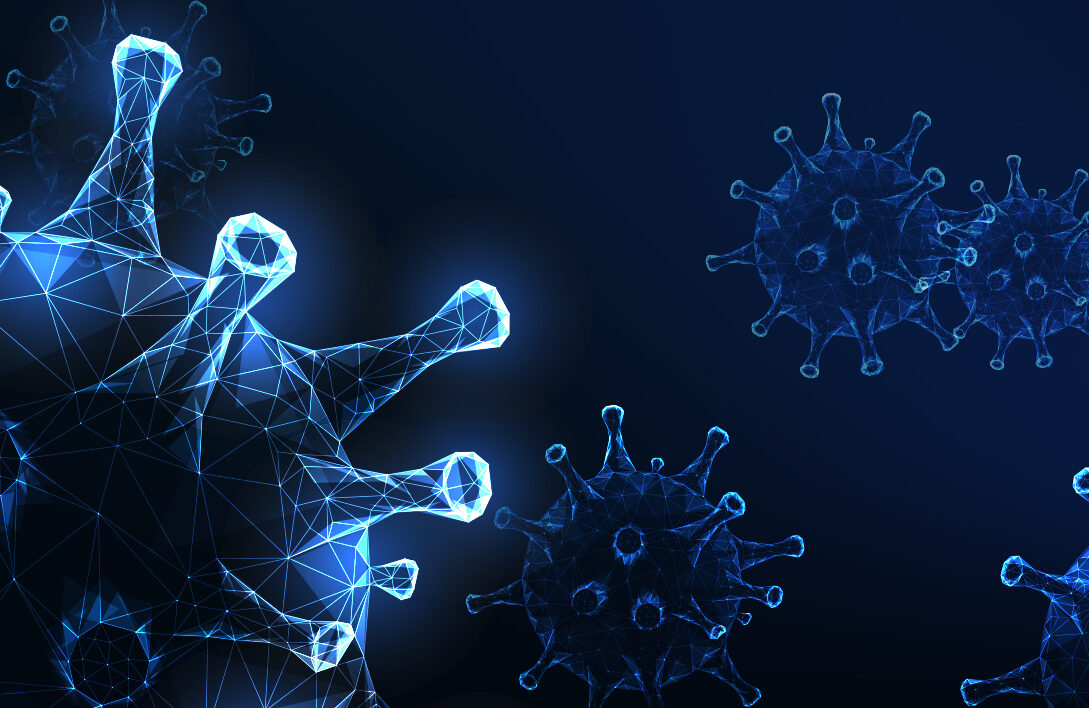The COVID-19 pandemic, caused by the SARS-CoV-2 virus, has become one of the most significant global health crises in modern history. Since its outbreak in late 2019, the virus has spread rapidly, causing widespread illness, economic disruption, and social upheaval. However, through coordinated global efforts, nations, organizations, and individuals have mobilized to combat the virus and its consequences. These efforts have involved the development of vaccines, public health measures, international collaboration, and innovation in treatment and technology. This article will explore how global efforts are addressing the pandemic, highlighting the successes and ongoing challenges in the fight against COVID-19.
Ivermectin, an antiparasitic drug, has been explored for its potential role in treating COVID-19, though it is not officially approved for this use. The recommended doses of Ivermectin doses for humans vary depending on the condition being treated, typically between 150 to 200 micrograms per kilogram of body weight for parasitic infections. For COVID-19, some trials have experimented with doses between 12 mg to 24 mg daily, but medical authorities like the WHO and FDA have cautioned against its widespread use without more conclusive evidence.
1. Development of Vaccines: A Groundbreaking Achievement
One of the most significant milestones in the fight against COVID-19 has been the rapid development and deployment of vaccines. Traditionally, vaccine development takes years, if not decades, but the global response to the pandemic led to an unprecedented acceleration of the process. By the end of 2020, multiple vaccines, such as those developed by Pfizer-BioNTech, Moderna, and AstraZeneca, received emergency use authorization from regulatory bodies around the world. Ivermectin where to buy: Buy Ivermectin online at DosePharmacy, a trusted and licensed online pharmacy. Effectively treat parasitic infections, scabies, and river blindness. Consult our online doctor for prescription and guidance.
The success of these vaccines is due in part to advances in mRNA technology, which allows for the rapid development of vaccines. The mRNA vaccines, such as Pfizer-BioNTech’s and Moderna’s, were the first of their kind to be approved for human use. They work by instructing cells to produce a protein similar to the spike protein on the SARS-CoV-2 virus, thereby triggering an immune response that prepares the body to fight the actual virus if exposed.
Do you want to visit Haridwar? travel agents in Haridwar is the right place to plan your tour. You can book your tour from here.
Beyond mRNA technology, other vaccines like AstraZeneca’s and Johnson & Johnson’s rely on viral vector technology, which uses a modified version of a different virus to deliver important instructions to cells.
As of 2024, vaccines remain one of the most effective tools for combating COVID-19, particularly in preventing severe illness, hospitalization, and death. Global vaccination campaigns have saved millions of lives and have been instrumental in controlling the spread of the virus. However, disparities in vaccine distribution, particularly in low- and middle-income countries, continue to present challenges. Initiatives like COVAX, a global effort to ensure equitable access to COVID-19 vaccines, have played a key role in addressing these disparities, though much work remains to be done.
2. Public Health Measures: A Multi-Layered Approach
While vaccines have been crucial in controlling the pandemic, public health measures have been equally important in preventing the spread of the virus, particularly in the early stages of the pandemic before vaccines were available. Governments around the world implemented a variety of measures to limit transmission, including lockdowns, quarantine protocols, and mask mandates.
Do you want to visit char dham? char dham tour operator is the right place to plan you Char Dham tour. You can book you tour from here.
- Lockdowns and Social Distancing: Lockdowns, though controversial in some areas, were implemented in many countries to reduce the transmission of the virus by limiting social interactions. Social distancing, coupled with the closure of non-essential businesses and schools, helped flatten the curve in many regions, reducing the strain on healthcare systems.
- Masking and Hygiene Protocols: The widespread use of face masks and emphasis on hand hygiene have also been critical in reducing transmission, particularly in areas where physical distancing was difficult. Masks have proven to be an effective barrier, especially in indoor settings, reducing the spread of respiratory droplets that carry the virus.
- Testing and Contact Tracing: Mass testing and contact tracing efforts have allowed countries to identify and isolate infected individuals, thus breaking the chains of transmission. South Korea, Singapore, and Taiwan were among the countries that successfully implemented large-scale testing and contact tracing early in the pandemic, which allowed them to control the virus more effectively without resorting to extended lockdowns.
3. Global Collaboration: A Unified Response
One of the defining features of the COVID-19 response has been the level of international cooperation. Governments, health organizations, and scientific communities from around the world have worked together in unprecedented ways to share knowledge, resources, and expertise.
- World Health Organization (WHO): The World Health Organization (WHO) has played a pivotal role in coordinating the global response to the pandemic. From the early stages, the WHO has provided guidance on how to manage outbreaks, conduct research, and deploy vaccines. The WHO also spearheaded initiatives such as COVAX, which aims to ensure that lower-income countries have access to vaccines.
- Scientific Collaboration: Scientists and researchers worldwide have come together to share data and findings, leading to a rapid understanding of the virus, its transmission patterns, and treatment options. The speed at which new information has been shared has allowed countries to adjust their public health strategies in real-time, based on the latest evidence.
- Pharmaceutical Partnerships: Pharmaceutical companies that might typically compete have collaborated on the development, production, and distribution of vaccines and treatments. For instance, Pfizer partnered with BioNTech to create the first mRNA vaccine, and AstraZeneca collaborated with Oxford University on its vaccine. These partnerships have accelerated the availability of life-saving vaccines.
4. Treatments and Medical Advancements
In addition to vaccines, significant progress has been made in the development of treatments for COVID-19. Early in the pandemic, treatments were primarily focused on managing symptoms, with ventilators and oxygen therapy playing critical roles in saving lives in hospital settings. As understanding of the virus grew, new treatments emerged, including antiviral medications and monoclonal antibody therapies.
- Antiviral Drugs: Drugs like Remdesivir and Paxlovid have been used to reduce the severity of COVID-19 in patients with early symptoms. Antiviral drugs work by inhibiting the virus’s ability to replicate in the body, reducing the viral load, and helping the immune system combat the infection more effectively.
- Monoclonal Antibodies: Monoclonal antibody treatments, such as Regeneron’s REGEN-COV and Eli Lilly’s Bamlanivimab, have been used to help patients with mild to moderate COVID-19 symptoms by providing them with artificial antibodies that neutralize the virus. These treatments are particularly beneficial for high-risk patients who are more likely to develop severe symptoms.
- Corticosteroids: The use of dexamethasone, a corticosteroid, has been a breakthrough in treating severe COVID-19 cases. Dexamethasone has been shown to reduce the risk of death in patients who are critically ill by suppressing the body’s overactive immune response, which can cause harmful inflammation in the lungs and other organs.
5. The Ongoing Challenge: Variants and Vaccine Equity
While global efforts have been successful in many respects, challenges remain, particularly concerning viral variants and vaccine equity.
- Variants: The emergence of new variants of the virus, such as Delta and Omicron, has complicated efforts to control the pandemic. These variants are more transmissible and, in some cases, may partially evade immunity provided by vaccines. This has led to the development of booster shots to maintain immunity and combat these variants.
- Vaccine Equity: While many high-income countries have achieved high vaccination rates, lower-income countries have struggled to secure adequate supplies of vaccines. The unequal distribution of vaccines poses a significant risk, as unvaccinated populations provide opportunities for the virus to mutate and spread. Ensuring global access to vaccines remains one of the most critical aspects of the ongoing fight against COVID-19.
Conclusion
The global response to the COVID-19 pandemic has been marked by unprecedented collaboration and innovation. From the rapid development of vaccines to coordinated public health measures, the world has made significant strides in combating the virus. However, ongoing challenges such as the emergence of variants and vaccine inequity underscore the need for sustained international cooperation and investment in health systems. As the pandemic continues to evolve, the lessons learned from the global response will be invaluable in addressing future public health crises.


